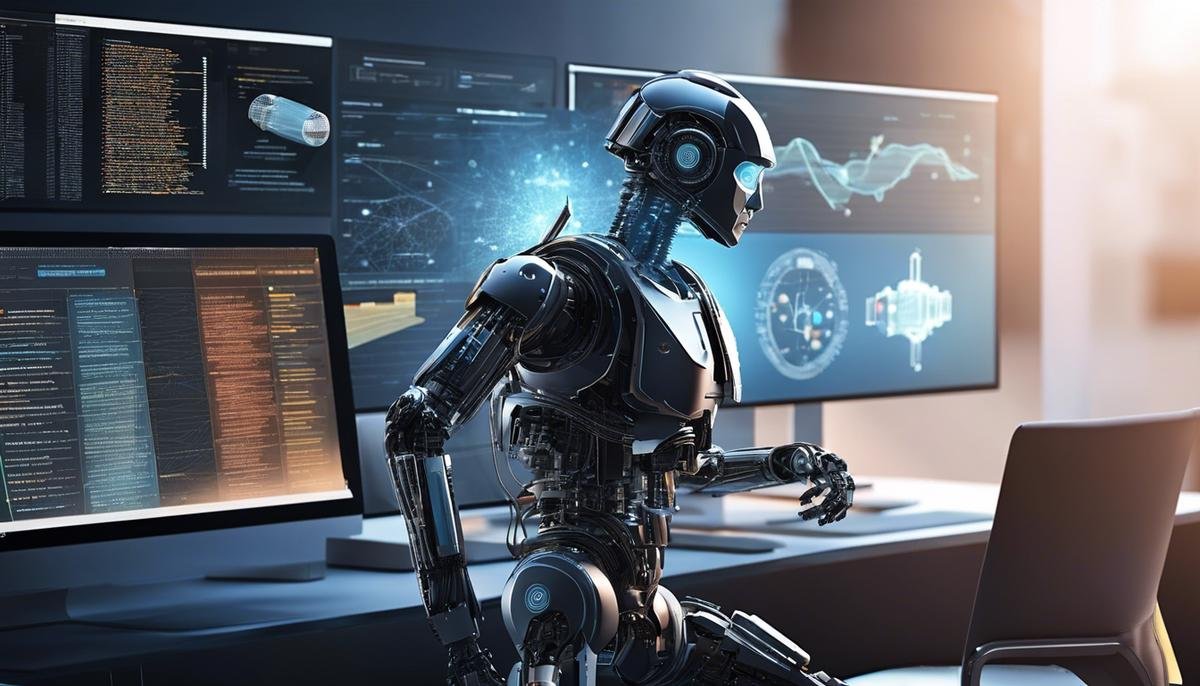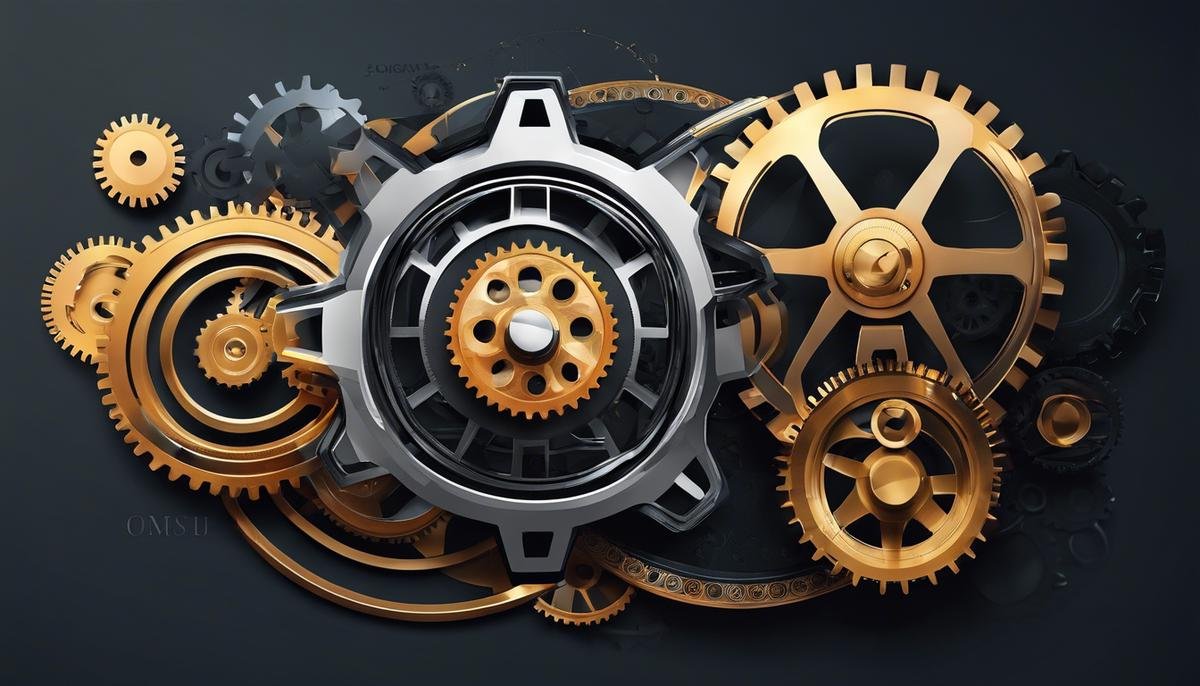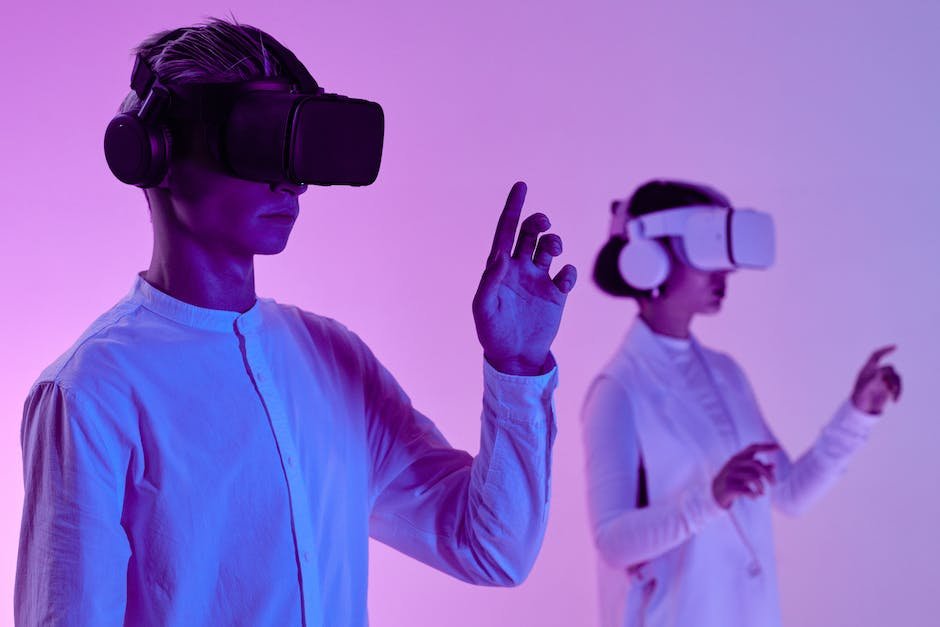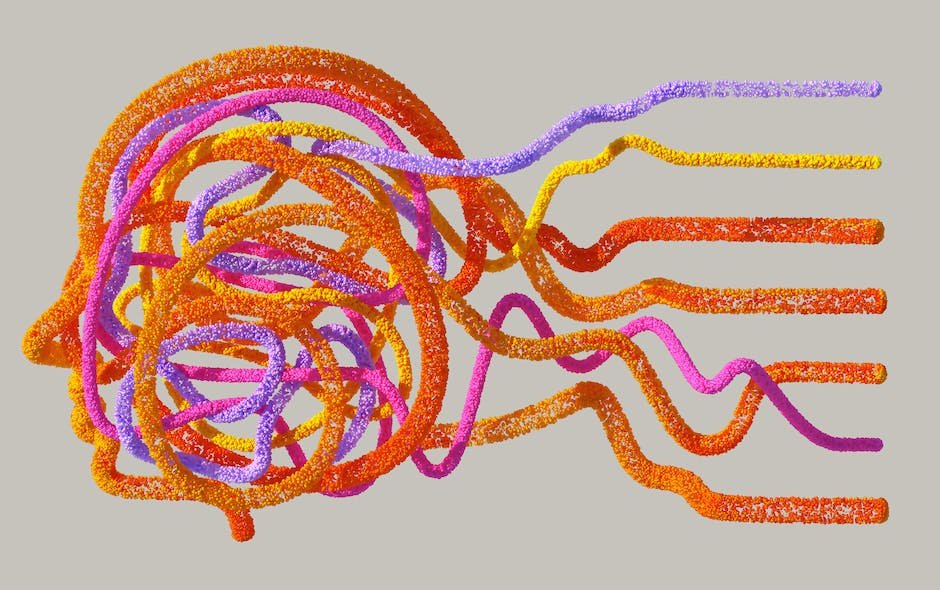The relentless march of technology has brought artificial intelligence to the forefront of modern web design, revolutionizing the way websites are created, experienced, and interacted with. As the digital realm becomes increasingly complex, AI has risen as an ingenious architect capable of crafting virtual spaces with precision and adaptability. From its nascent stages to the sophisticated platforms of today, AI’s impact on web design is profound, shaping a future where the lines between human creativity and algorithmic efficiency blur. In this essay, we embark on a journey through the historical development and current state of AI in web design, while dissecting the core technologies that infuse artificial intelligence with transformative power for designers and end-users alike.
Historical Development and Current State of AI in Web Design
The Evolution of Artificial Intelligence in Web Design: A Pivotal Asset
Artificial Intelligence (AI) has graduated from a speculative novelty to an indispensable asset in web design, fundamentally altering the landscape of how digital experiences are curated and implemented. The meticulous interweaving of AI into the fabric of web development has bolstered not only the efficiency of the design process but also the caliber of user engagement.
The Genesis of AI in Web Design
Initially, AI tiptoed into the realm of web design through simple automation tools that streamlined repetitive tasks. These rudimentary applications of AI enabled web designers to devote more energy to creative and strategic elements of web design, as mundane aspects such as code generation and optimization were handled by algorithms.
The Advancement of Intelligent Design
As AI systems matured, their capabilities expanded exponentially. Machine learning algorithms, with their ability to learn from and adapt to data, have granted AI the ability to suggest design adjustments based on user behavior patterns. By analyzing extensive datasets collected from website interactions, AI can now predict what design choices will resonate with the audience, crafting personalized user experiences.
Furthermore, the development of natural language processing (NLP) has allowed for more intuitive interfaces to emerge. AI-driven chatbots, designed with NLP, can simulate human-like conversations, providing instant customer support and deepening user engagement through responsive, adaptive communication.
The Spectacle of Visual Excellence
In the visual domain, AI’s influence shines distinctly. Tools leveraging AI can automatically optimize images for faster loading times, thus enhancing the user experience (UX). Moreover, AI-based design assistants can generate color schemes, layouts, and even logos, facilitating a cohesive visual narrative that aligns with the brand identity.
The Emergence of Adaptive Web Experiences
Most notably, AI has given rise to adaptive web design. These intelligent web designs can shift and morph to meet the preferences of individual users without manual intervention. Whether adjusting font sizes for readability or reconfiguring the navigation for easier access, AI-driven websites respond dynamically to the user’s needs, crafting an inclusive environment for all visitors.
The Pivotal Role of AI in Optimization
Search engine optimization (SEO) is yet another sector where AI exerts its considerable influence. AI tools scrutinize website content, ensuring that it aligns with SEO best practices and thereby improving search engine rankings. This optimization extends the reach of websites, drawing more visitors and potential customers.
Conclusion
In essence, the metamorphosis of AI from a secondary tool to a cornerstone of web design cannot be overstated. Its integration within this field has not only enhanced the functionality and aesthetic appeal of websites but also revolutionized the very methodology of crafting digital spaces. As research advances, AI’s potential for further innovation in web design remains boundless. The synthesis of AI with web design is not simply serendipitous; it is a testament to the relentless pursuit of excellence in creating user-centric digital ecosystems.

The Core Technologies Powering AI in Web Design
Unveiling the Core Technologies Powering AI-Driven Web Design Evolution
In the realm of web design, artificial intelligence has emerged as a cutting-edge instrument reshaping the digital landscape. Embracing its potential has led to transformative user experiences and unparalleled efficiency in creating accessible, engaging websites. To understand how AI revolutionizes web design, it is imperative to explore the foundational technologies that serve as the bedrock for these advancements.
Machine Learning Algorithms: The Architects of Personalization
At the heart of AI-driven web design lies machine learning (ML), an intricate subset of artificial intelligence that empowers systems to learn and improve from experience without being explicitly programmed. These algorithms analyze vast arrays of user data to recognize patterns and predict future behaviors. Consequently, websites can deliver personalized content and recommendations, ensuring a unique and satisfying experience for each user.
Natural Language Processing: The Bridge Between Machines and Humans
Natural language processing (NLP) is crucial in enabling websites to understand and interpret human language. This technology powers chatbots and virtual assistants that provide instant support and interaction with users on a website. By processing and responding to natural language, these AI elements make navigation and problem-solving more intuitive and human-like.
Neural Networks: The Visual Connoisseurs of Web Design
Deep learning, particularly through neural networks, simulates the function of the human brain to facilitate intricate tasks, including image recognition. Web design utilizes such networks to auto-generate aesthetically pleasing layouts and to optimize visuals for different screen sizes and resolutions. This ensures a consistently attractive interface, regardless of how or where a user accesses the site.
Data Analytics: The Strategic Engine for Optimization
Data analytics technology is indispensable for continually enhancing website performance. By scrutinizing user interaction data, AI tools help pinpoint what works well and what needs improvement. This ongoing analysis leads to data-driven decisions, effectively optimizing website layouts, loading times, and even targeted marketing strategies to meet user expectations more accurately.
Cloud Computing: The Boundless Playground for AI Applications
Lastly, the integration of cloud computing with AI-in-web design cannot be understated. This technology provides the vast computational power and storage needed for the resource-intensive tasks AI performs. With cloud platforms, even small-scale websites can leverage sophisticated AI tools that were once accessible only to organizations with substantial resources.
These underlying technologies are collectively transforming the art and science of web design. They are not standalone wonders but interconnected gears in the elaborate machinery of AI innovation. Leveraging these powerful tools, AI continues to shape the future of web interaction, offering an ever-more seamless, personalized, and efficient browsing experience.

Impact of AI on Web Design Professionals and Clients
The profound influence of Artificial Intelligence (AI) on web design professionals and their clientele cannot be overemphasized. Beyond the previously discussed technological breakthroughs and methodology enhancements, AI continues to redefine the very fabric of web development, particularly in the arenas of efficiency, automation, and decision-making.
One critical area AI impacts is the efficiency of workflow for web developers. AI-powered tools now exist that can automate coding, leading to the rapid generation of templates and the swift execution of otherwise time-consuming tasks. Through automated debugging and code generation, AI enables developers to allocate more resources to creative and complex problems, thereby elevating the potential for innovative designs.
Moreover, AI reshapes the relationship between web professionals and their clients. Instead of lengthy process iterations and communication labyrinths that could disrupt project timelines, AI assists in mediating clients’ inputs through intelligent interfaces. These systems can interpret and translate client requirements into actionable design elements, bridging the gap between non-technical clientele and technical execution.
Additionally, AI aids in real-time customization of user experiences. By analyzing visitor data on-the-fly, AI can alter layouts, navigation, and content display to suit individual user preferences and behaviors. This not only caters to the user’s unique needs but also increases engagement and the potential for conversion—all of which are invaluable to clients looking to maximize the return on their digital investments.
Furthermore, AI has ushered in a new era of adaptive security measures within web design. Recognizing the paramount importance of cybersecurity, AI-driven security protocols can predict vulnerabilities, adapt to emerging threats, and counteract malicious activities more efficiently than static, human-monitored systems.
In the world of search engine optimization (SEO), AI’s capacity to process and analyze large datasets is indispensable. AI algorithms can efficiently evaluate user search patterns and behavior, enabling web developers to better understand and optimize webpages to align with the ever-changing algorithms of search engines, thus maintaining a competitive edge in the digital marketplace.
Lastly, the convergence of AI with emerging technologies, such as augmented reality (AR) and virtual reality (VR), is revolutionizing web interactions. By integrating these immersive experiences, web designers can craft environments that were once the realm of science fiction, further distinguishing their offerings and supplying clients with cutting-edge representations of their brands.
The transformative power of AI in web design continues to expand the possibilities for professionals and their clients alike. It fosters a more proficient, responsive, and tailored web, reformulating the digital landscape with each innovative stride. As AI evolves and becomes even more intricately woven into the web development process, stakeholders can anticipate a future where the limitations of today will become the breakthroughs of tomorrow.

AI and User Experience (UX) Design
Artificial intelligence (AI)
is poised to reshape the user experience design landscape significantly. As web designers and developers grapple with the challenge of creating interfaces that are both intuitive and engaging, AI emerges as a potent force driving innovation and proficiency in this realm. With its vast capabilities, AI continues to open uncharted avenues, enriching the user’s digital journey and setting unprecedented standards in personalized service delivery.The crux of AI’s influence on user experience design hinges upon the intelligent automation of complex tasks, which not only streamlines the process but also enhances the quality of the end results, offering a meticulously crafted experience to users. This paradigm shift can be observed in the facilitation of real-time decision-making processes, where AI assists in tailoring web content and functionalities on-the-fly, based on the user’s immediate requirements and historical interactions. Such a dynamic framework demonstrates a quantum leap from the static web designs of yore.
In the contemporary digital ecosystem, the confluence of AI and big data analytics is instrumental in deciphering user behavior patterns. This synergy allows for a granular analysis of user data, translating into more accurate user personas and journey maps. It is this precision that enables user experience designers to predict and preempt user needs effectively, presenting an anticipatory design approach that is both subtle and impactful.
Moreover, AI is markedly revolutionizing the arena of accessibility in web design. By implementing AI-based tools and algorithms, web platforms can now effortlessly adapt to serve the needs of users with disabilities, a testament to the inclusive ethos that technology espouses. Such advancements ensure that the web is a space accommodating a broader spectrum of human experience and interaction, a foundational tenet of user experience design.
The trajectory of AI in user experience design is also exemplified by the incorporation of emotion AI, or affective computing, which seeks to understand and respond to the emotional states of users. By analyzing facial expressions, voice intonations, and other physiological signals, AI can transform the design of user experiences to be far more empathetic and responsive to the subtleties of human emotion, forging a deeper connection between the user and the digital medium.
Looking towards the horizon, the essence of AI in crafting future user experiences encapsulates a vision where design transcends the visual and functional, melding with cognitive elements to conceive experiences that are immersive, contextually aware, and profoundly human-centric. The potential for AI to continually evolve and redefine the boundaries of user experience design is boundless, heralding a new epoch where design is not merely experienced but felt, understood, and deeply personalized. In this brave new world of user experience design, AI is not just an adjunct; it is the very warp and weft that will define the digital tapestry of tomorrow.

Ethical Considerations and Potential Misuses of AI in Web Design
As the digital landscape persists in its relentless advance, the role of artificial intelligence (AI) in web design has burgeoned beyond mere optimization and personalization into the domain of ethical conundrums and potential risks.
The ethical implications of utilizing AI in web design are manifold, requiring meticulous evaluation and foresightedness to avert potential pitfalls.
A principal ethical implication orbits around the issue of privacy. With AI’s expansive capability to collect, analyze, and leverage user data to tailor experiences, there emerges an unrelenting question: at what point does personalization infringe upon an individual’s right to privacy? AI systems designed to create web experiences often necessitate comprehensive data, but there must exist stringent protocols to ensure that this data is not exploited beyond the intended scope, safeguarding user confidentiality.
Furthermore, transparency in AI operations is indispensable. Users must be cognizant of when AI is shaping their web interactions, allowing them to consent to the degree of personalization and data use. The presence of AI, concealed in the undercurrent of web design, ought not to lead to manipulative practices that could, intentionally or unintentionally, steer user behavior without their informed consent.
The equitable access to AI-enhanced tools also raises ethical concerns. While AI can significantly improve the user experience and streamline web design processes, there is a looming risk of creating a divide where only those with access to such cutting-edge technology can compete in the market. This concern extends to the potential obsolescence of certain skill sets as AI automation grows, which could lead to significant professional displacement if not managed with foresight and the provision of re-skilling opportunities.
Additionally, AI systems, albeit sophisticated, are not immune to bias. The data sets they learn from could be skewed, leading to discriminatory practices baked into the algorithms. It is imperative that such systems be designed and perpetually tested for fairness and impartiality, ensuring that web design remains free from intrinsic prejudice and serves a diverse user base impartially.
Accountability for the actions of AI systems is another ethical quandary. In cases where an AI-driven design decision leads to a negative outcome, the delineation of responsibility can become blurred. It is thus vital for web designers and organizations to maintain robust oversight over AI systems and bear the responsibility for ensuring that the AI’s actions align with ethical standards and societal norms.
In conclusion, while AI harbors the potential to revolutionize web design, bringing innovation and efficiency to new zeniths, it is incumbent upon the scientific and professional community to vigilantly navigate the ethical terrain, ensuring AI’s integration into web design champions not just technological prowess but also the greater values of privacy, transparency, equity, fairness, and accountability. Without a summary, this discussion invites further scholarly discourse, anticipating an evolution of the ethics in AI as much as the technology itself.

The Future of AI-Integrated Web Design
As we consider the forthcoming chapters in the integration of artificial intelligence (AI) with web design, it becomes increasingly important to contemplate the ethical dimensions that underlie these technological advancements. As scholars and practitioners in the field of web development, we foresee a future where AI not only refines user experiences but also prioritizes the sanctity of user privacy and the imperative for fairness in an increasingly automated landscape.
One of the critical intersections of ethical concern lies with privacy preservation amidst AI’s expansive data consumption. The ability to customize and streamline user experiences with AI often hinges upon the collection and analysis of personal data. As we move forward, it will be essential for AI systems embedded within web infrastructure to deploy advanced privacy-preserving algorithms, such as differential privacy mechanisms, which ensure individual anonymity within large datasets. Furthermore, the necessity for a stout framework that mandates transparent operations and explicit user consent before data collection cannot be overstated. Users must be adequately informed and given control over what data is collected and how it is utilized.
Simultaneously, AI tools for web design must be democratized to avert the deepening of the digital divide. Exclusive access to AI, if left unchecked, risks magnifying socio-economic disparities. Thus, it is crucial that these versatile tools become available to a broad spectrum of users and creators, thereby enabling a more equitable digital ecosystem. Concurrently, the potential displacement of jobs by AI-driven automation presents an ethical challenge, which necessitates a collaborative approach to nurture and foster an adaptive workforce with skillsets complementing AI advancements.
Moreover, the design practices informed by AI must contend with ingrained biases to assure the delivery of fair and unbiased user experiences. AI systems are only as objective as the datasets they are trained upon. Therefore, strenuous efforts to curate diverse, balanced, and unbiased training data are essential for mitigating discriminatory outcomes. This pursuit of fairness extends to the very genesis of AI algorithms, shaping web design, which must be under constant scrutiny to discourage perpetuating existing social inequities.
Concerning accountability in AI-mediated design decisions, it is paramount to institute mechanisms that attribute decisions to identifiable processes or entities. Such structures yield an environment where AI’s decision-making can be audited and, when necessary, overridden by human judgment, especially in matters where personal subtleties demand sensitive consideration beyond the present capacity of AI.
In closing, navigating the ethical terrains that accompany the integration of AI into web design is not merely an obligation but a commitment to advancing a digital landscape that honors human dignity, justice, and equity. As the guardians of this techno-social frontier, it is incumbent upon us to wield AI not as an unguided arrow but rather as a considerate compass that leads us toward a future where technology serves all of society, responsibly and compassionately.

As we stand at the threshold of a new digital horizon, AI’s role in web design promises an exciting amalgamation of innovation and creativity. Web design, once the exclusive domain of human ingenuity, is now a collaborative dance with intelligent algorithms, heralding a future rich with untapped potential. The ethical responsibilities and challenges we face in harnessing this potential must be navigated with care, ensuring that as AI reshapes our digital landscapes, it does so to the benefit of all stakeholders involved. Harnessing the power of AI in web design requires a forward-thinking approach, one that celebrates the technology’s capabilities while remaining vigilantly aware of its impacts. The adventure is far from over; it is merely turning a new page, readying for the chapters of innovation yet to be written.




